- This short piece gives 8 contributions
of the Gaekwads to Baroda State that started primarily from the rule of
Sayajirao Gaekwad in 1875.
It appears that Congress leader Rahul Gandhi is totally ignorant of royal families’ contributions to uplift their people despite British rule.
The first article in this series was the
Contribution of the Wadiyar
Kings to Mysore State. This one is on the Gaekwad rulers of Baroda. For
simplicity is in point form.
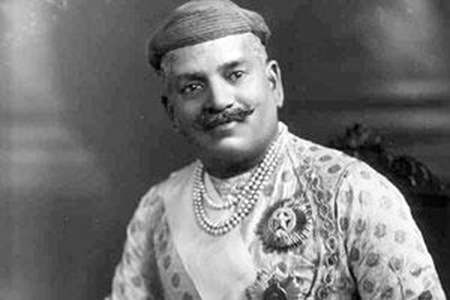 Sayajirao Gaekwad III.
Sayajirao Gaekwad III.
1. Senior journalist Niranjan R wrote
in the MINT, “The reason why
all the older women of Dwarka were educated was that they grew up in the
erstwhile kingdom of Baroda, ruled by the great Sayajirao Gaekwad III. Primary education was compulsory in the state for boys and girls after 1906, many decades before independence.”
2. He added, “The list of Sayajirao
Gaekwad III achievements as a ruler from 1875 to 1939 is truly
astonishing. Baroda had free and
compulsory primary education for all. Child marriage was banned. Divorce was
legalized. A network of libraries was set up
across the state, modeled on American public
libraries. The first textile mills, railways and the Bank of Baroda (now nationalized)
were set up. The arts were given state backing. The city was beautified with
wide roads, parks and public buildings. Sayajirao
encouraged men of the stature of B.R. Ambedkar, Aurobindo Ghosh and Sarvepalli Radhakrishnan at the beginning of their careers.”
Sayajirao
founded the Bank of
Baroda in 1908.
3. When Sri Aurobindo returned from England he was employed
by the Baroda State and lived there from 1893 to 1906.
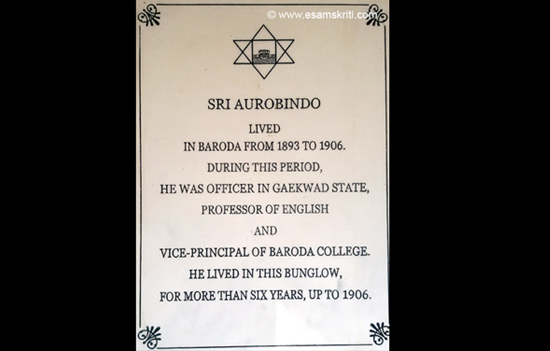 At Sri Aurobindo residence in Baroda.
At Sri Aurobindo residence in Baroda.
"During this period he also joined a revolutionary society and took a leading role in secret preparations for an uprising against the British Government in India. In 1906, soon after the Partition of Bengal, Sri Aurobindo quit his post in Baroda and went to Calcutta, where he soon became one of the leaders of the Nationalist Movement.”
Fatesinghrao
Gaekwad wrote in Sayajirao of Baroda, “Sayajirao was aware of Aurobindo’s political views and, by all accounts, secretly sympathized with them. He provided military training to one of Aurobindo’s friends, Jatin Banerjee, and thereby defying a ban imposed by the British government against employment of Bengalis in the army.” Pg 206
Next to
the Sursagar Lake is the Maharaja Sayajirao
University-Department of Classical Music. The department was started as a ‘Gyan Shala’ in 1886. “In 1916, the department hosted historic first Music
conference of United India led by Pt. Bhatkhande and patronized by Shrimant Sayajirao Gaekwad III, in which 400 stalwarts attended from all over India and neighboring countries.”
5.
Supported Ambedkar Education
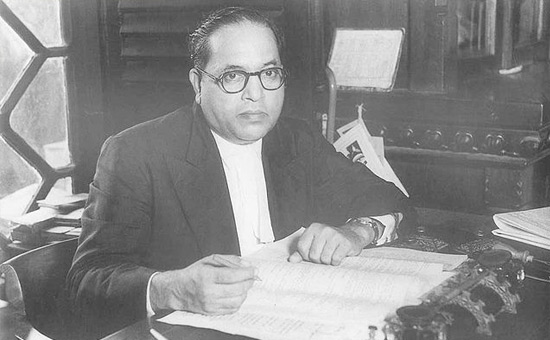
After he passed the Inter Arts exams Ambedkar father
ran out of funds. Maharaja Sayaji Rao Gaikwad agreed to help with a scholarship
of Rs 25/ per mensem. Pg. 21 Dr Ambedkar
Life and Mission’ by Dhananjay Keer.
Another quote, “In June 1913, The Maharaja of Baroda thought of
sending some students to the U.S.A. for higher studies at Columbia University.
Bhimrao narrated his whole story to Maharaja in his palace in Bombay and
thereafter the Maharaja decided to send Bhimrao along with three others
students for higher education.”
Fatesinghrao
Gaekwad wrote in Sayajirao of Baroda, “He ordered the setting up of elected village panchayats and municipalities in towns, and established a legislative council, in which 6 out of 17 seats were filled by election.” Pg 205
6. Education – Baroda College 1881 & Maharaja Sayajirao University founded in 1949
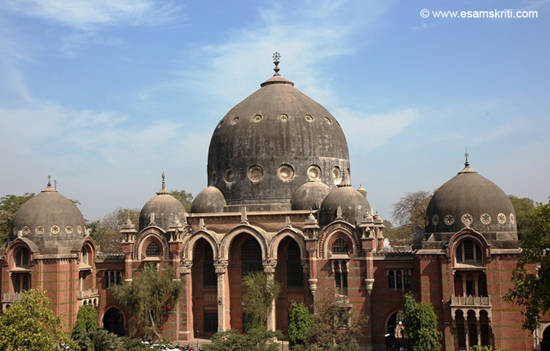 Dome.
Dome.
It is supposed to be the second largest dome in India after Bijapur. “The development of the
University may be divided into two phases. 1881 to 1949 as Baroda College and phase 2 is as M.S. University of Baroda 1949 onwards.” Source
“Pratapsinh (ruler from 1939 to 1968) founded the Maharaja Sayajirao University of Baroda in 1949, as per the wishes of his grandfather, Sayajirao, and settled the "Sir Sayajirao Diamond Jubilee and Memorial Trust", which still exists, providing for the educational and other needs of the people of the former Baroda State.” Source
Sayajirao founded Baroda State Museum
and Picture Gallery in 1894 & 1914.
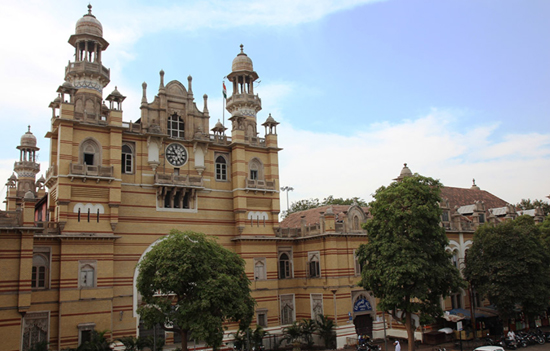 Nyay Mandir or Court, Baroda.
Nyay Mandir or Court, Baroda.
7. Railway network and Public
Park
“It was during Sayajirao’s reign that a large narrow gauge railway network was set up in Baroda State with Dabhoi at its focal point. Sayajirao envisioned a water supply scheme for Baroda in 1892 at Ajwa which would supply drinking water to the people of Baroda by gravity. The large public park originally called Kamati Baug and now called Sayaji Baug were his gift to the City of Baroda.” Source
8. Support to Industry
“He attached great importance to economic development and started number of model industries to encourage initiative, and then handed back the working industries to private enterprise. He started model textile and tile factories.” Source Many might not recall Baroda Rayon Corporation (engaged
in textile industry in Surat) that was set up in 1958.
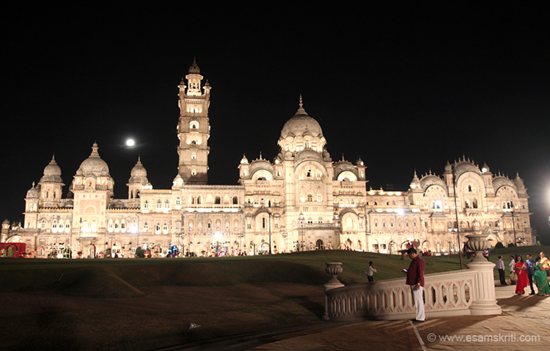 Lakshmi Vilas Palace Baroda attracts lots of tourists.
Lakshmi Vilas Palace Baroda attracts lots of tourists.
In case I have missed out any key
contribution please mail esamskriti108@gmail.com
or leave a comment.
Also
read
1. For names of various Gaekwad
rulers